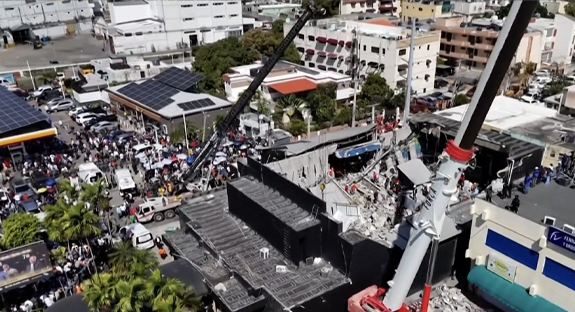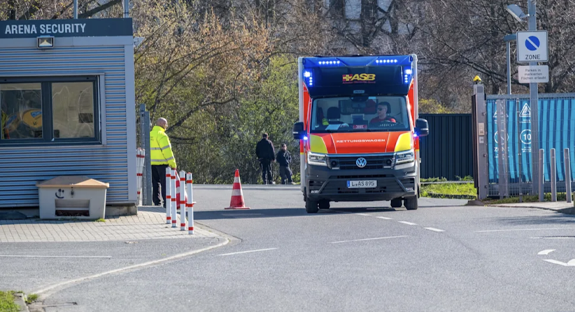Theatre equipment, such as cameras & lighting booms, lift and lower as part of their operation. They, therefore, have the potential to result in catastrophic and fatal injuries if they collapse during operation. However, several factors need to be considered when determining whether such equipment is ‘general work equipment’ or ‘lifting equipment’ that should be subject to a thorough examination. However, it’s often confusing know whether the equipment requires a PUWER or LOLER inspection.
We discuss the issues that should always be considered when determining whether a piece of equipment is subject to the Lifting Operations and Lifting Equipment Regulations 1998 (LOLER) or the Provision and Use of Work Equipment Regulations 1998 (PUWER). We also examine the Health & Safety Executive’s (HSE) viewpoint on theatre equipment and why this should not be the only issue that determines whether you should carry out a thorough examination.
Is it work equipment?
LOLER and PUWER will only apply if it is ‘work equipment’, defined under PUWER as “any machinery appliance, apparatus, tool or installation for use at work (whether exclusively or not)”.
In most instances, theatre equipment is generally used for the purposes of commercial gain and so it would be classed as work equipment. However, if it is used in a voluntary environment then it would not be covered by the provisions of PUWER or LOLER. Instead, the general principles of common law negligence would apply, including the duty to prevent all reasonably foreseeable accidents.
Is it lifting equipment?
The next step is to determine whether the equipment falls under the LOLER definition of lifting equipment.
Does it lift and lower a load?
‘Lifting equipment’ is defined under the LOLER regulations as “work equipment for lifting or lowering loads and includes its attachments used for anchoring, fixing or supporting it”.
Is its primary purpose to lift and lower a load?
If work equipment lifts or lowers a load, then it is not automatically subject to LOLER. Instead, it must lift or lower a load as a principal function.
With theatre equipment, such as cameras or lighting booms, there is an element of lifting as part of its normal operation, however, there is no load in the traditional sense and its principal function in this regard is probably height adjustment. Therefore, the equipment would be deemed to be ‘general work equipment’ that has an element of height adjustability only and, as such, fall under PUWER.
With equipment, such as stage lifts or abseiling devices, we apply similar rules. This type of equipment would fall within definition of ‘work equipment’ and ‘lifting equipment’ as the load (which in some cases could be a person) is clearly lifted or lowered by the lifting machine, therefore, both PUWER and LOLER would apply.
Some theatre equipment utilise lifting equipment in the overall design, so providing a hybrid situation. A typical example may be when several power hoists are permanently installed and used to lift, suspend and lower stage items such as lighting systems, scenery etc. above the stage. In such cases PUWER and LOLER would apply to the lifting equipment as the stage items would be considered as interchangeable loads in a traditional sense.
Do you disagree with this view? If so, what type of theatre equipment do you think may be subject to LOLER and why?
When should inspection and a thorough examination be carried out?
Regulation 9 of LOLER states that thorough examinations must be carried out:
Before using it for the first time – before equipment is taken into service (though there are some exceptions for CE marked new equipment)
Post installation – where safety is dependent on the installation conditions
In service – where lifting equipment is exposed to conditions which could cause deterioration that could lead to a dangerous situation, they must be thoroughly examined:
Periodically or in accordance with an examination scheme
Following any exceptional events such as an accident or long period without use.
If appropriate, lifting equipment should also be inspected at suitable intervals in-between thorough examinations.
If LOLER does not apply, then the inspection requirements of PUWER under Regulation 6 would apply. The inspection requirements must be carried out in the same circumstances, with the difference being that the scope and frequency of such inspections should be based wholly on controlling the risks associated with the likelihood and consequences of foreseeable failure, paying due regard to the manufacturer’s recommendations.
Why you should still carry out a thorough examination under LOLER
Theatre owners may conclude that certain types of theatre equipment do not fall under LOLER or, in certain cases, PUWER. However, all owners must accept theatre equipment can pose a significant risk to persons in certain circumstances. Therefore, all theatre equipment should be subject to an assessment of the risk associated with foreseeable deterioration and a suitable inspection regime be adopted that effectively considers and controls the likelihood and consequences of equipment failure. Adopting a risk-based approach to thorough examination & inspection as required by LOLER, as best practice, may also be considered as an effective way of complying with the general requirements of the Health and Safety at Work Act.
[Written by Paul Forrester]





